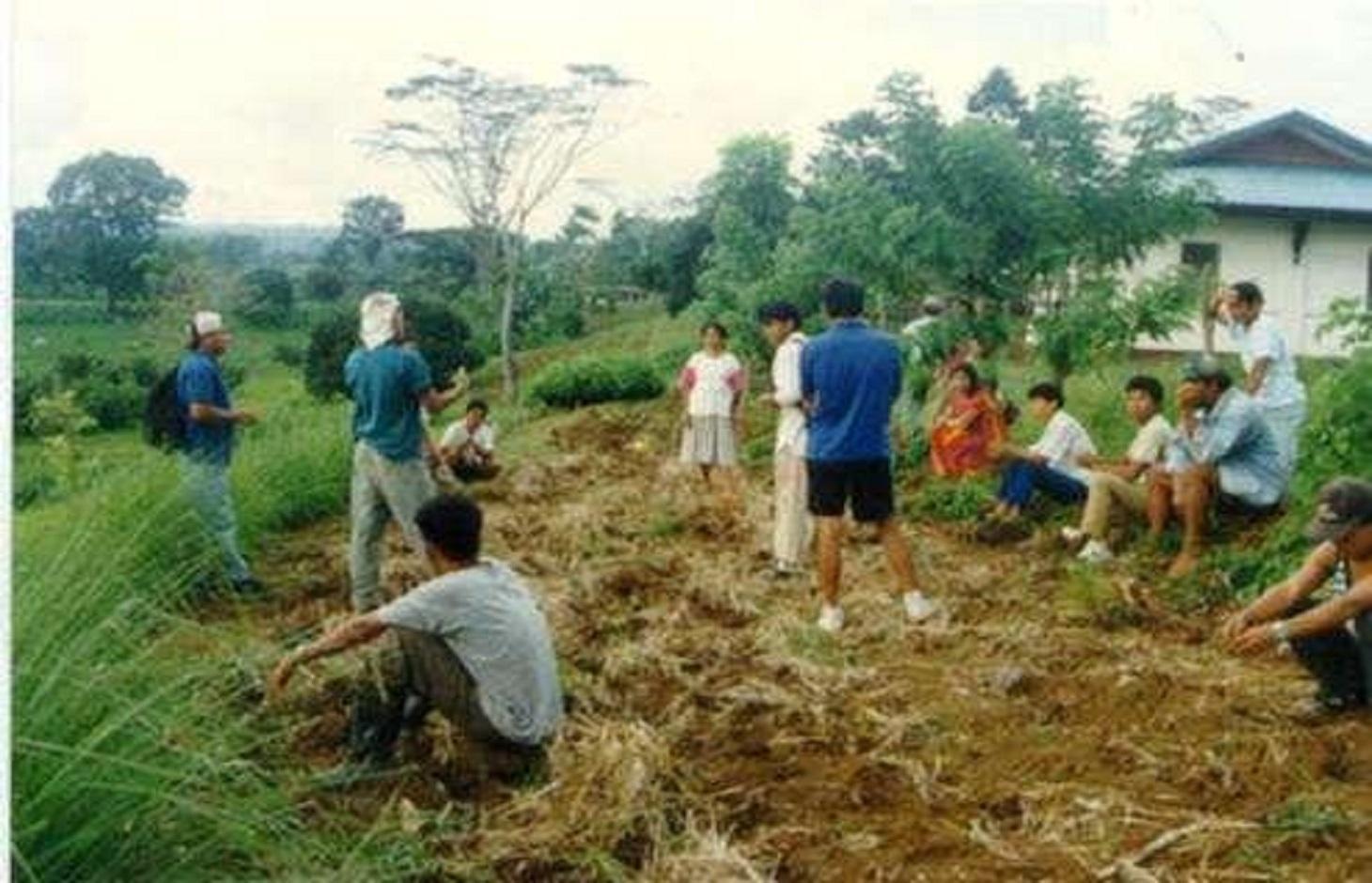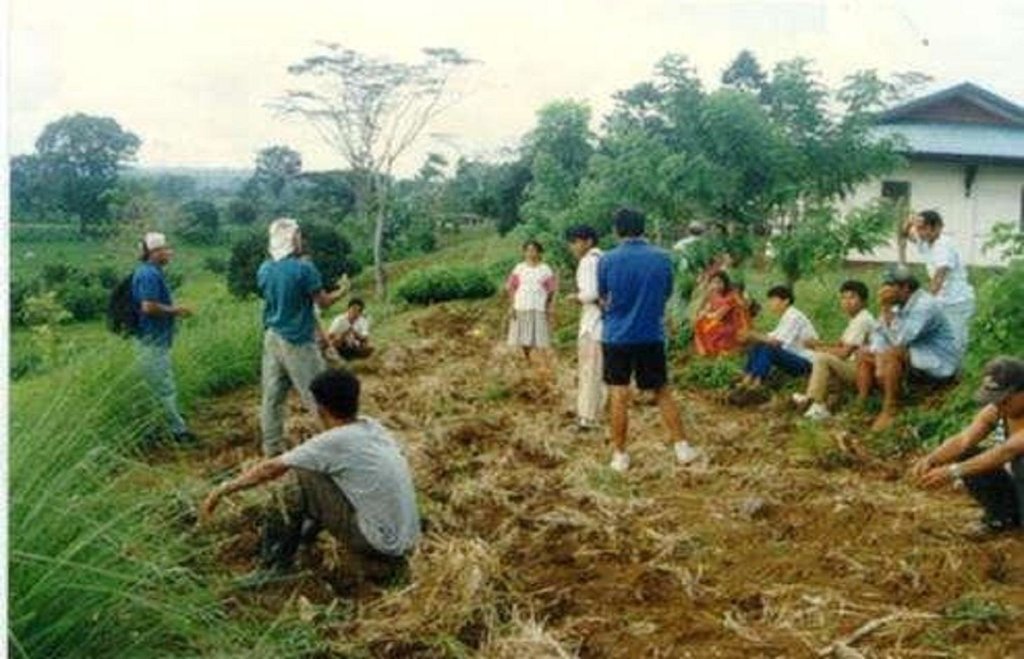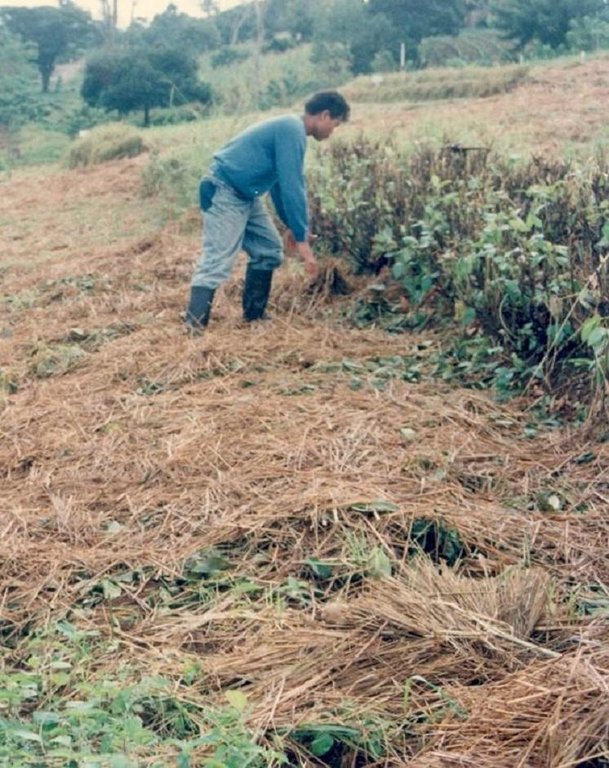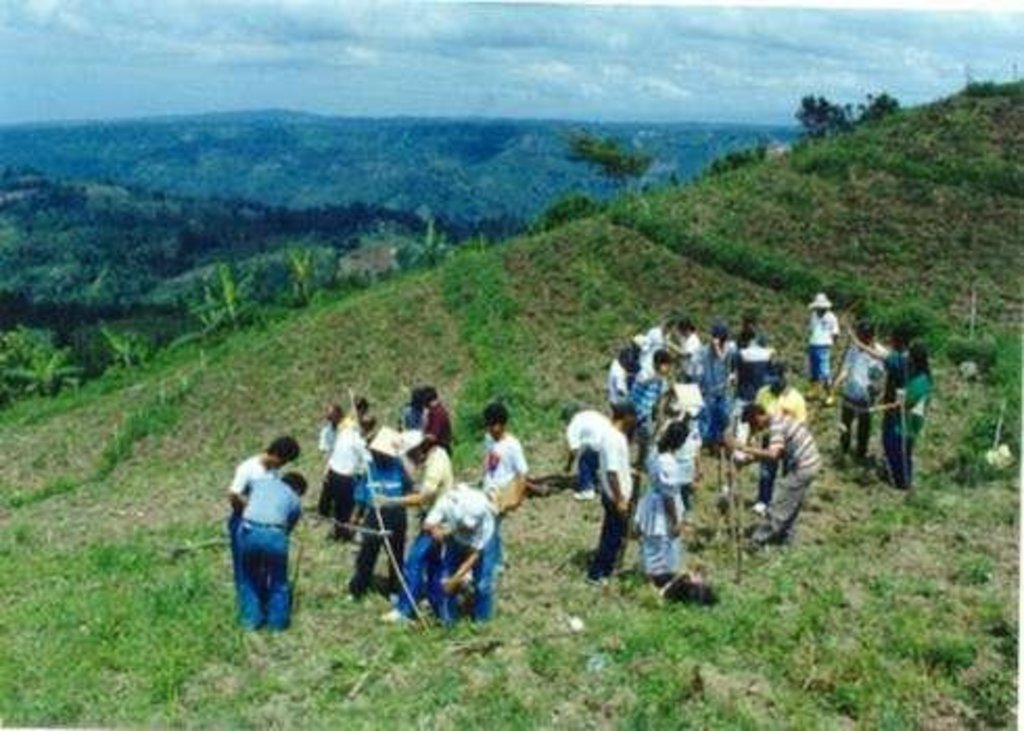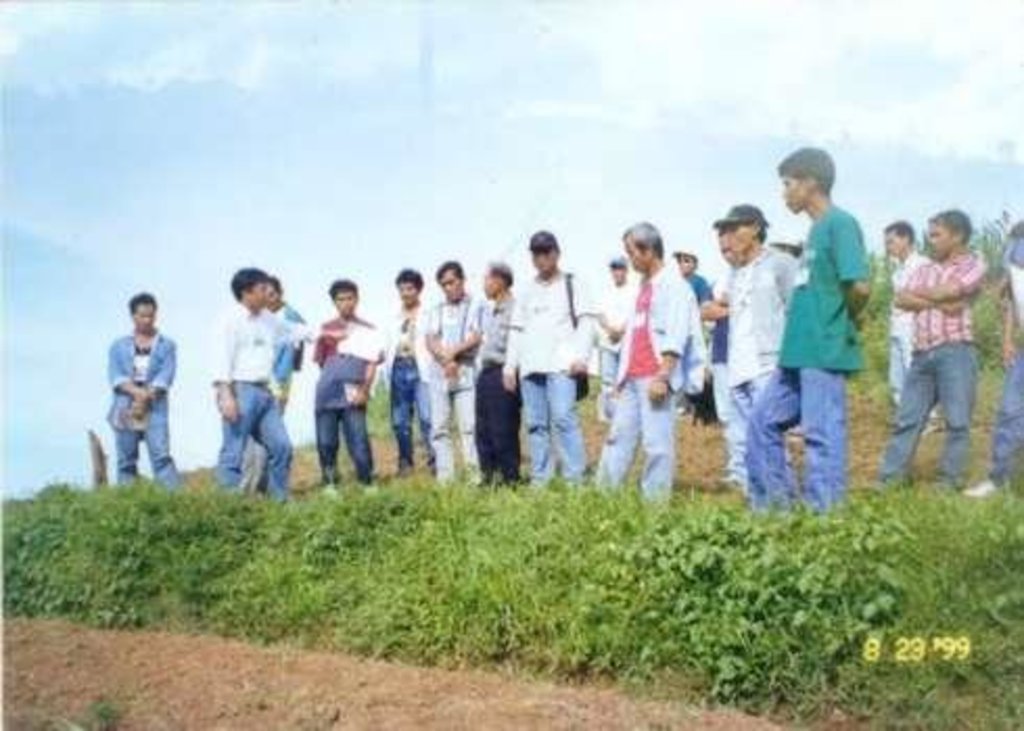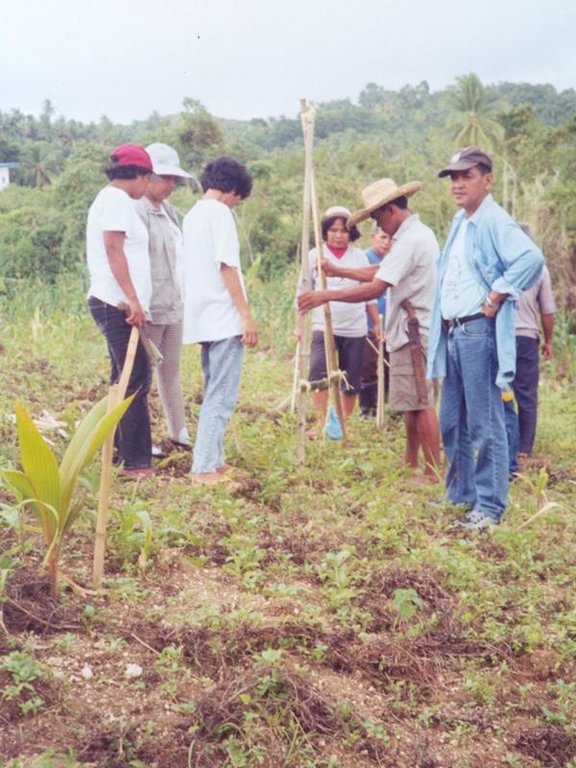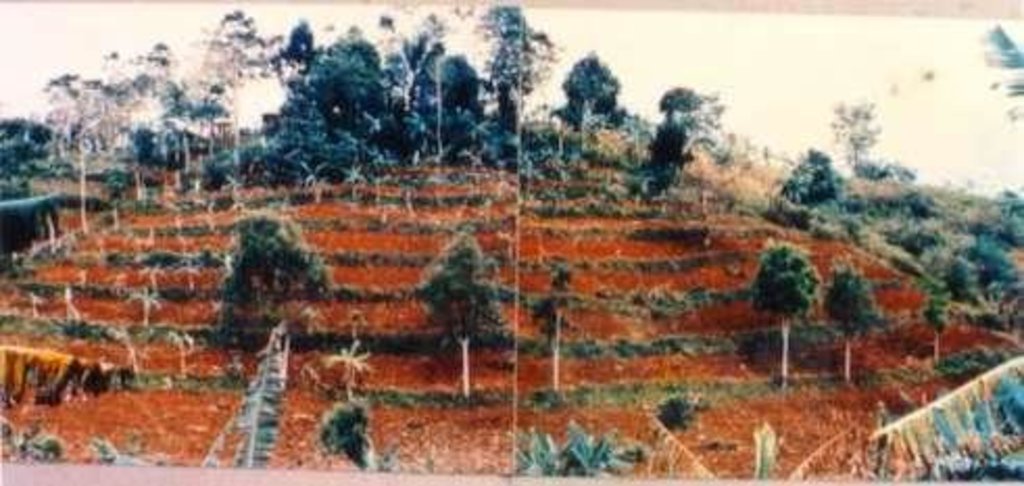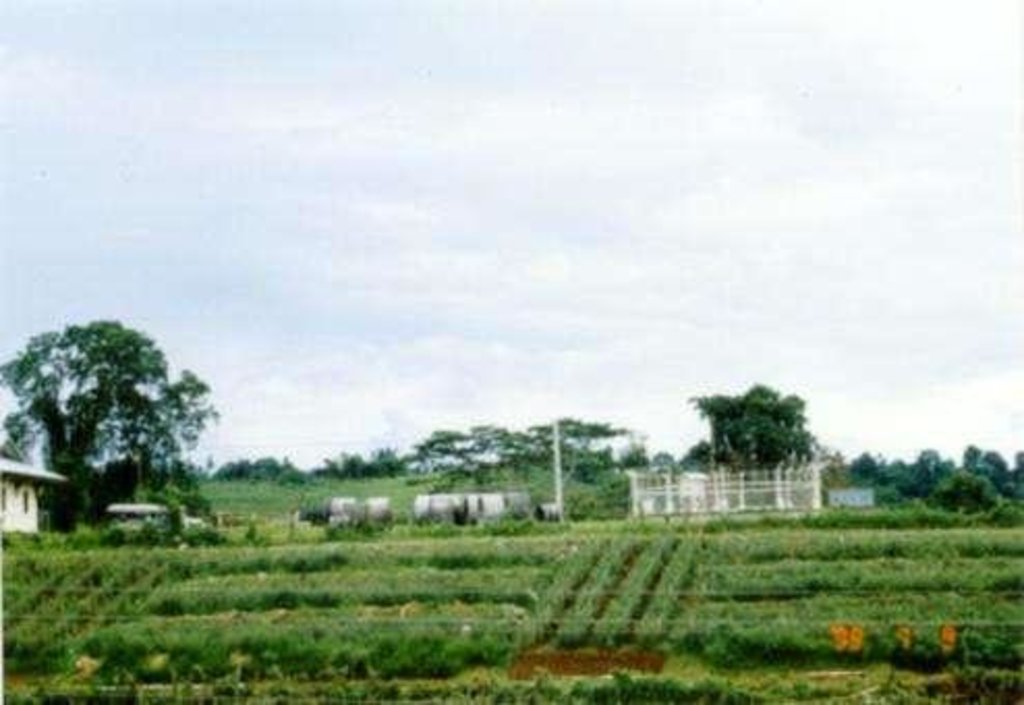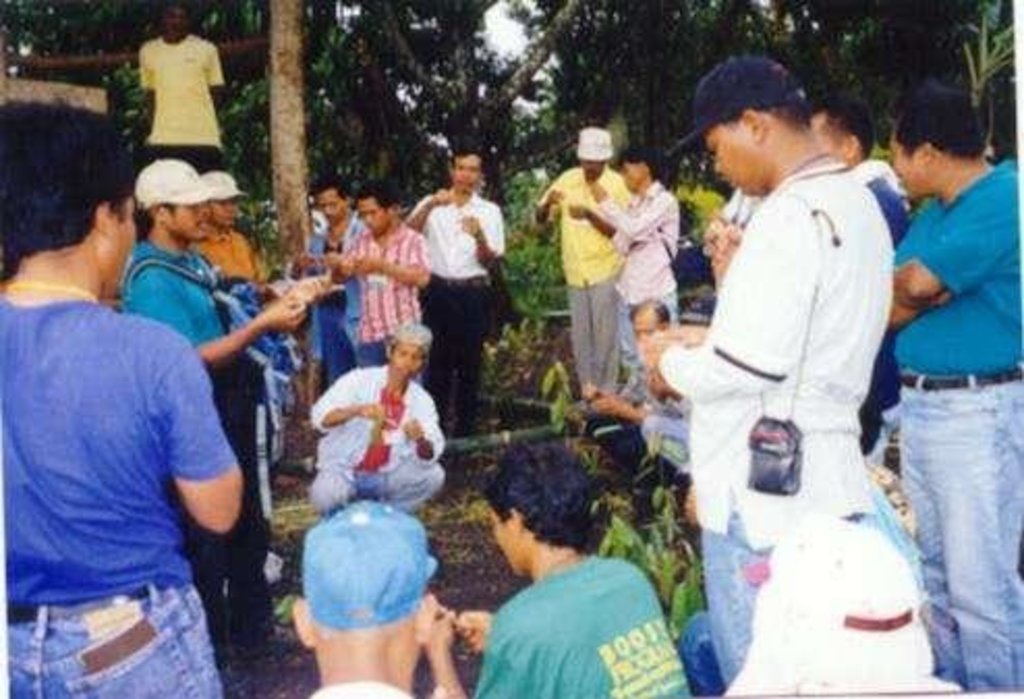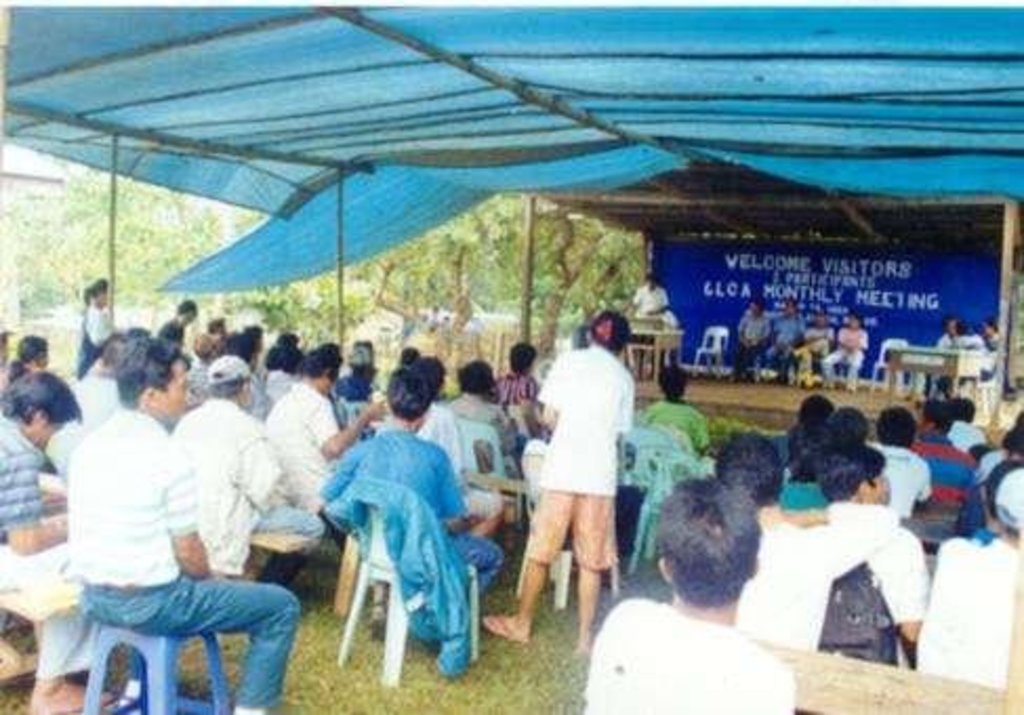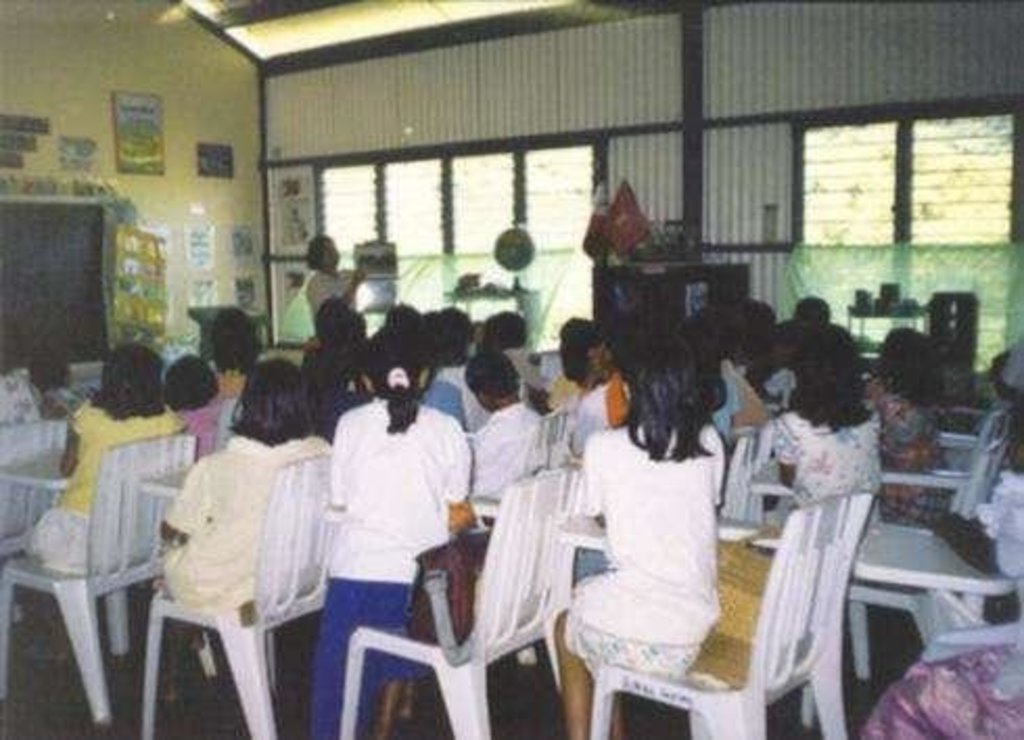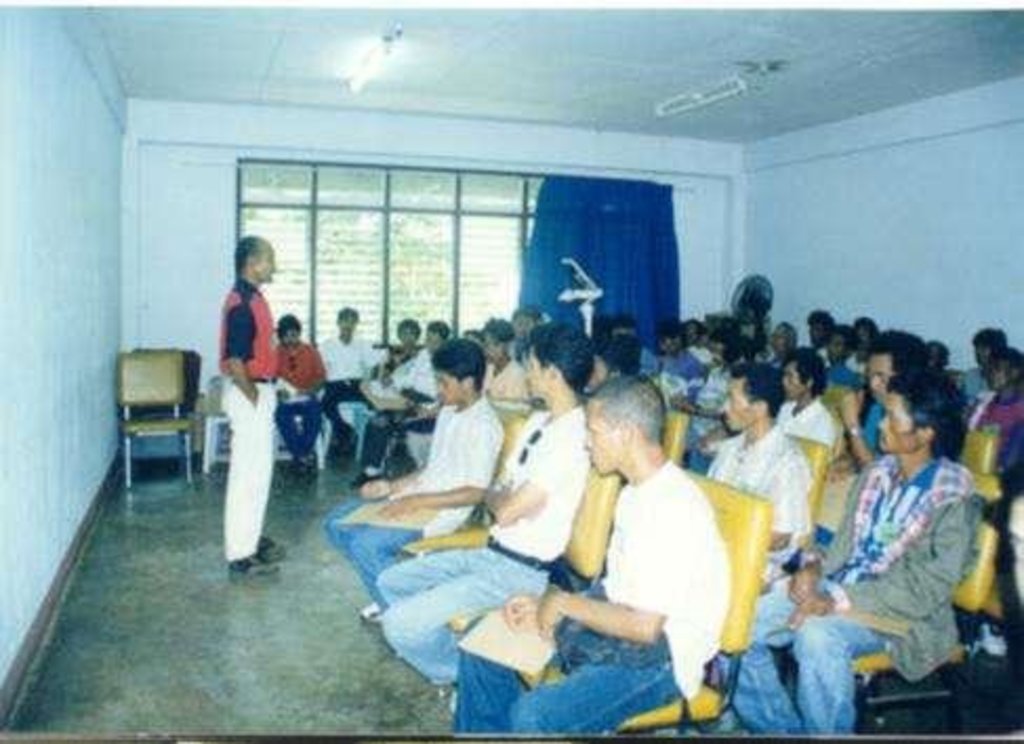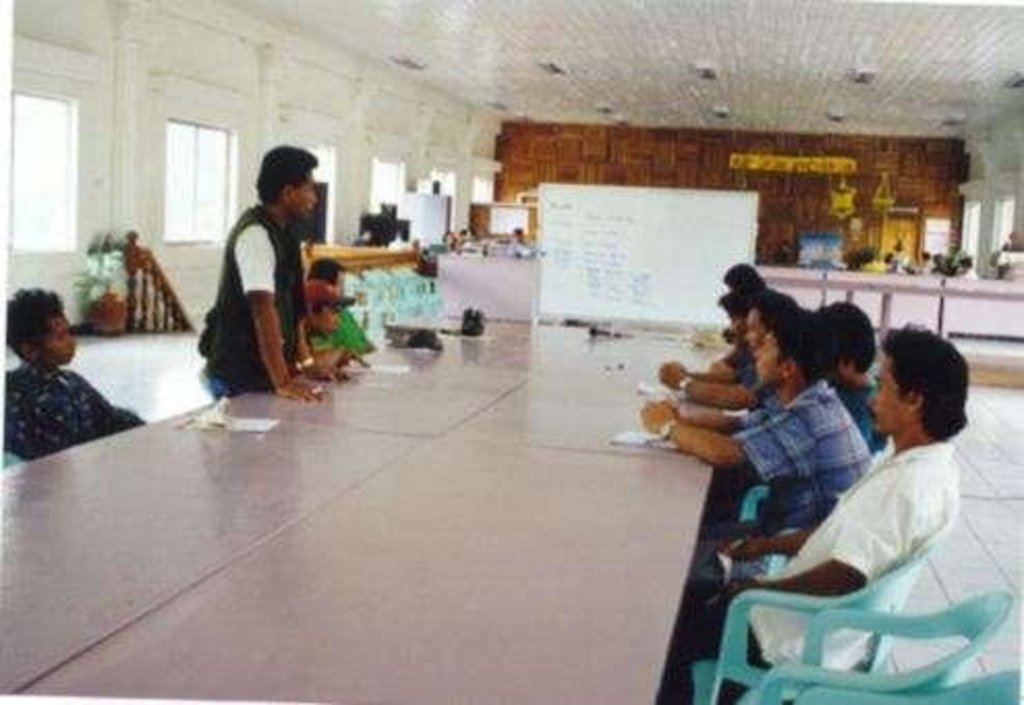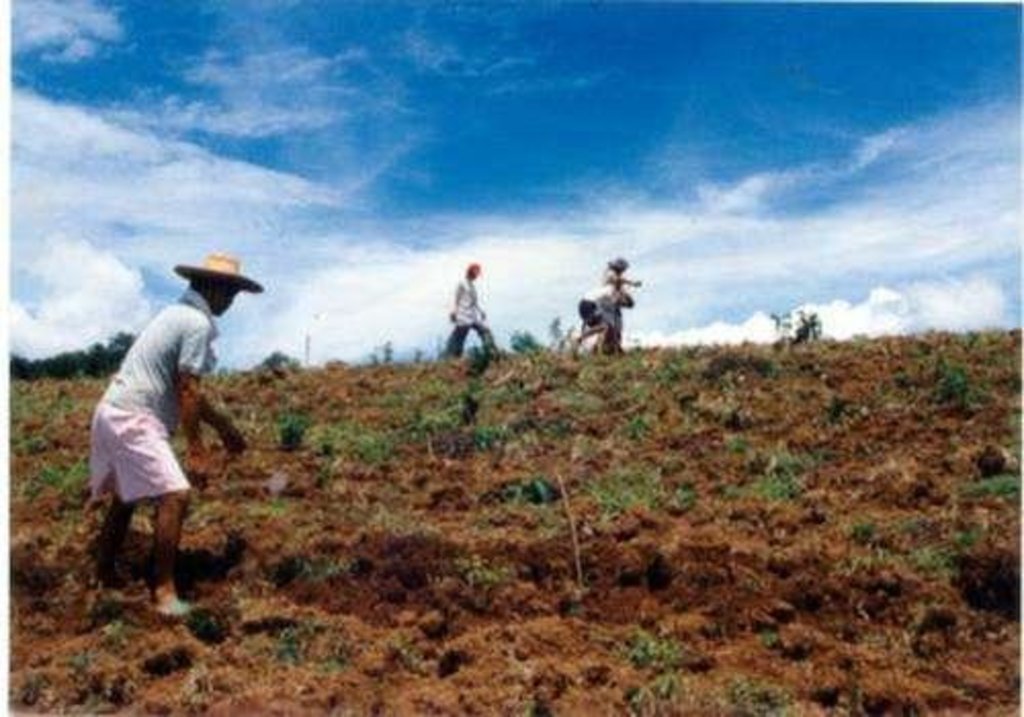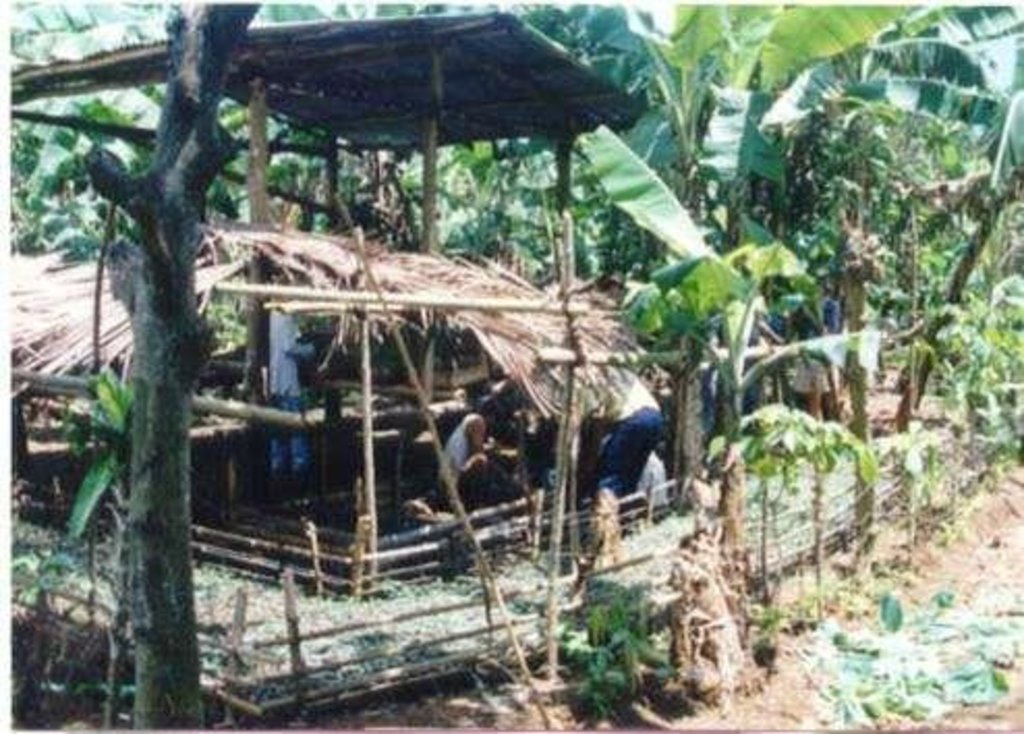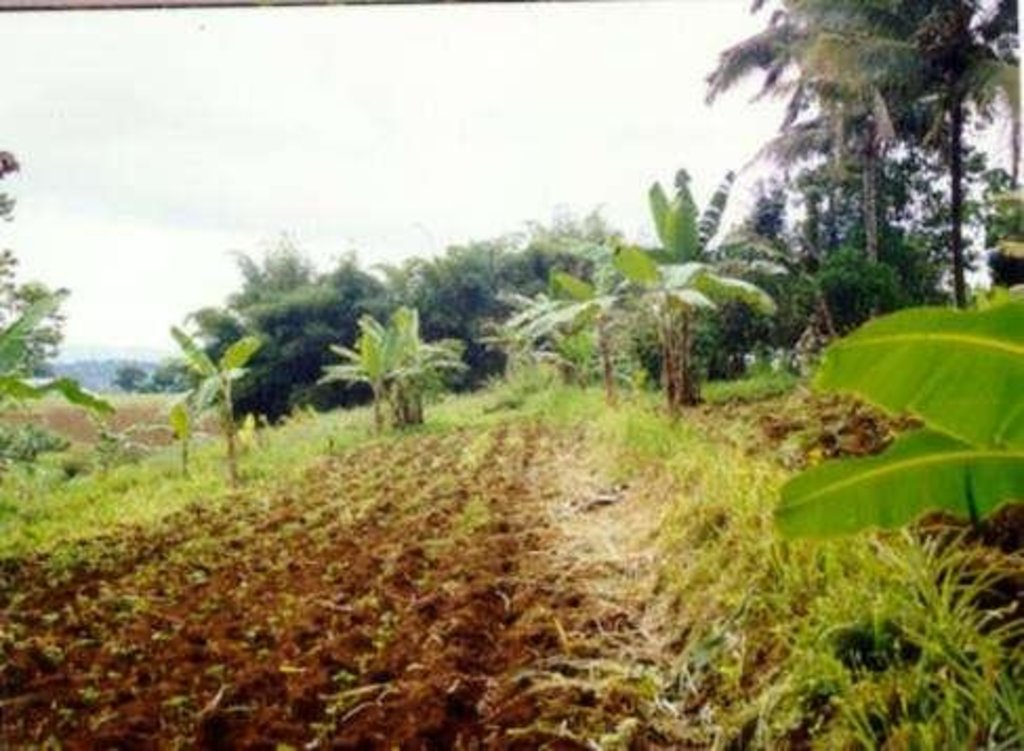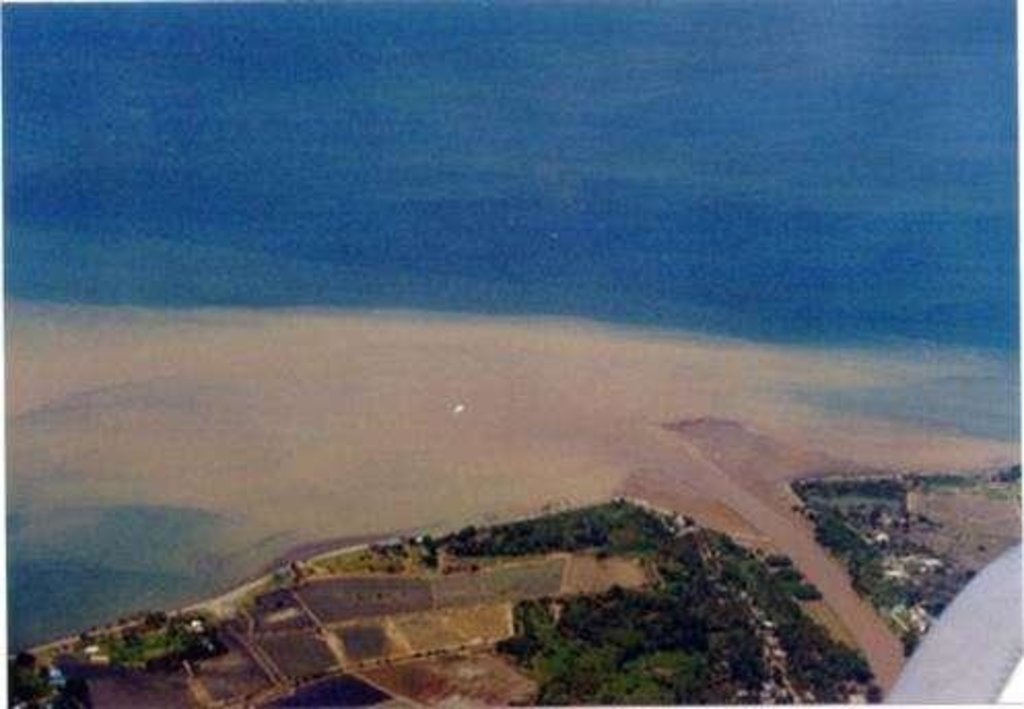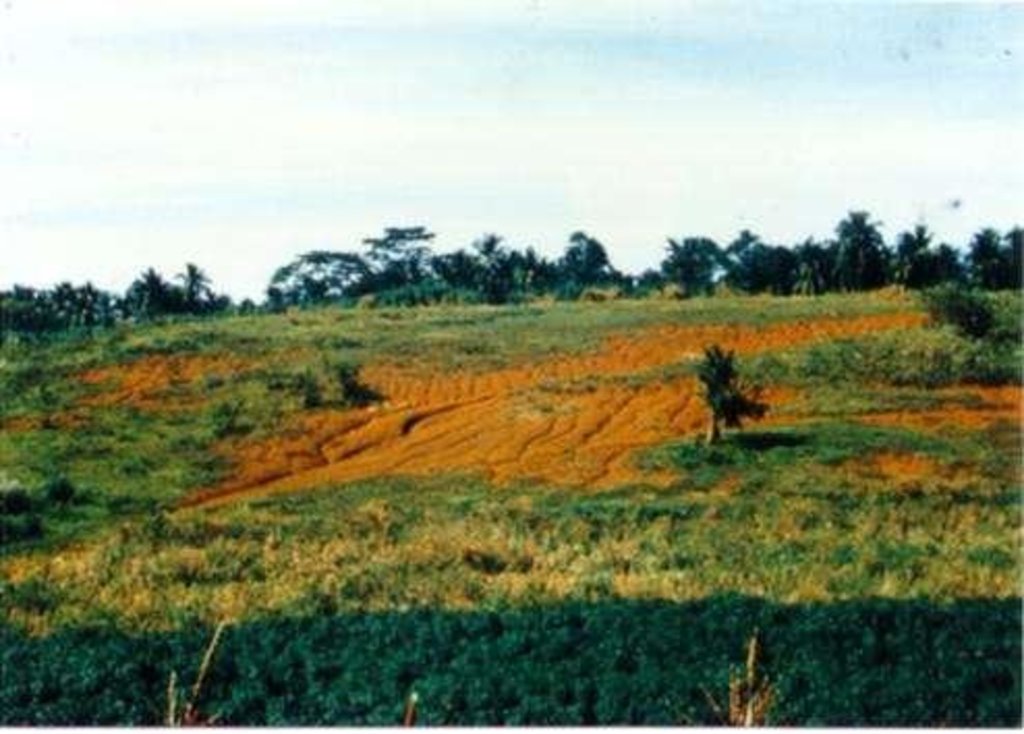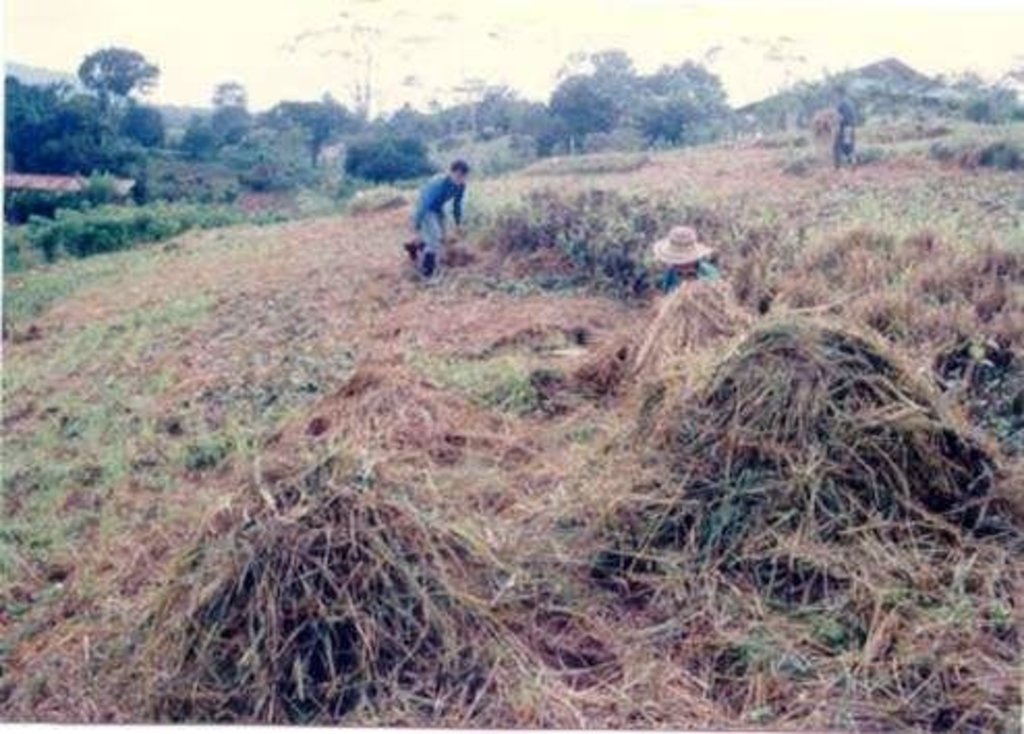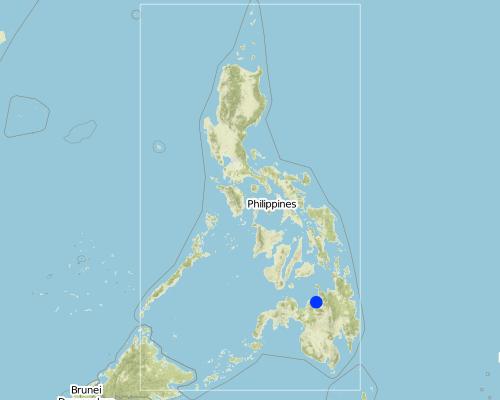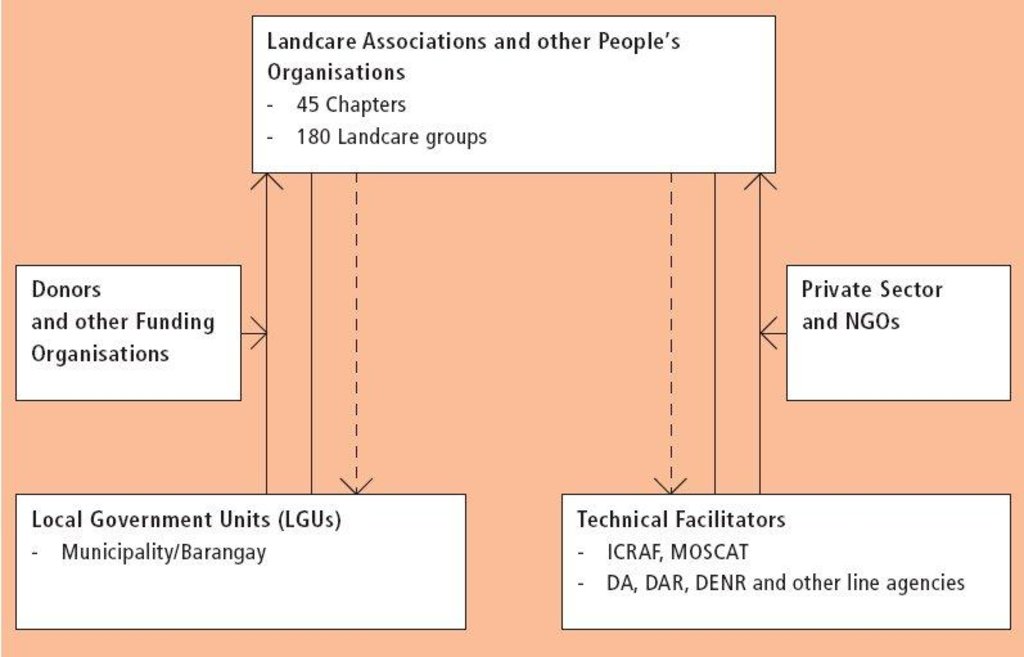LANDCARE - Claveria Landcare Association (CLCA) [Filipinas]
- Creación:
- Actualización:
- Compilador: Romeo Villamin Labios
- Editor: Deborah Niggli
- Revisor: Deborah Niggli
approaches_1934 - Filipinas
Visualizar secciones
Expandir todo Colapsar todos1. Información general
1.2 Detalles de contacto de las personas de referencia e instituciones involucradas en la evaluación y la documentación del Enfoque
Persona(s) de referencia clave/s
Especialista MST:
Garrity Dennis
D.Garrity@cgiar.org
ICRAF-Southeast Asian Regional Program, Bogor, Indonesia
Filipinas
Especialista MST:
Especialista MST:
Bertumen Manuel
(63) 918-710-0798 / Fax: (63) 8821-720964
kalinaw@cdo.philcan.com.ph
ICRAF-Philippines, MOSCAT Campus, Claveria; Misamis Oriental, Philippines
Filipinas
Especialista MST:
Mercado Augustin, Jr
ICRAF-Philippines@cgiar.org / agustin9146@yahoo.com
Claveria Research Site
MOSCAT Campus 9004, Claveria, Misamis Oriental, Philippines
Filipinas
Nombre del proyecto que facilitó la documentación/ evaluación del Enfoque (si fuera relevante)
Book project: where the land is greener - Case Studies and Analysis of Soil and Water Conservation Initiatives Worldwide (where the land is greener)Nombre del proyecto que facilitó la documentación/ evaluación del Enfoque (si fuera relevante)
Decision Support for Mainstreaming and Scaling out Sustainable Land Management (GEF-FAO / DS-SLM)1.3 Condiciones referidas al uso de datos documentados mediante WOCAT
¿Cuándo se compilaron los datos (en el campo)?
16/01/2009
El compilador y la/s persona(s) de referencia claves aceptan las condiciones acerca del uso de los datos documentados mediante WOCAT :
Sí
1.4 Referencia/s al/los Cuestionario(s) de Tecnologías MST
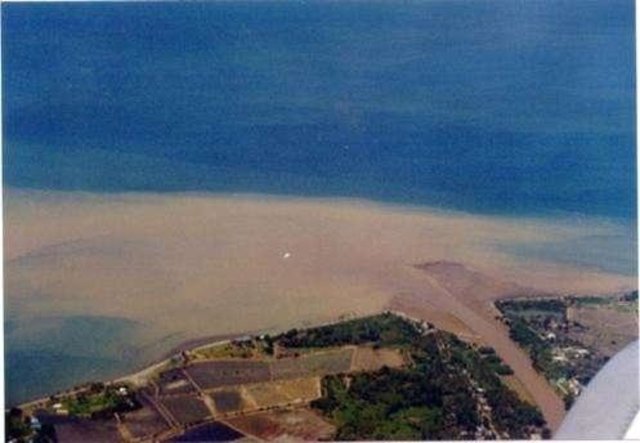
Natural Vegetative Strips (NVS) [Filipinas]
Within individual cropland plots, strips of land are marked out on the contour and left unploughed in order to form permanent, cross-slope barriers of naturally established grasses and herbs.
- Compilador: Philippine Overview of Conservation Approaches and Technologies
2. Descripción del Enfoque MST
2.1 Breve descripción del Enfoque
Associations that help diffuse, at low cost, soil and water conservation technologies among upland farmers to generate income while conserving natural resources.
2.2 Descripción detallada del Enfoque MST
Descripción detallada del Enfoque MST:
In parts of the Philippines, farmers who are interested in learning and sharing knowledge about sustainable land management and new SWC measures organise themselves into the so-called 'Landcare' associations. These self-help groups are a vehicle for knowledge exchange, training and dissemination of SWC technologies. A main objective is the empowerment of farmers' groups in their efforts to improve their livelihoods as well as the environment. Landcare has three components and aims at strengthening collaboration between those: (1) grassroot farmers' organisations (Landcare organisations); (2) technical facilitators, for example the World Agroforestry Centre (formerly the International Centre for Research in Agroforestry: ICRAF) and government and academic agencies and (3) Local Government Units (LGUs). The Landcare associations are structured as municipal groups, village groups (barangay level or affiliate peoples' organisations), and village sub-groups (sitio or purok level). This ensures effective dissemination of technologies from the municipal level down to the smallest village. To give the associations a legal status, they are registered with the Securities and Exchange Commission (SEC). Landcare associations conduct regular monthly meetings to promote exchange of information, ideas, and experience, thus promoting spread of SWC technologies. Extension service is carried out through the Local Government Units, which allocate 20% of their development funds for Landcare related activities such as meetings, training and visits, and nursery establishment. Farmers organised in Landcare groups have better access to technical and financial support for SWC activities from LGUs and other technical facilitators.
LGUs also enact local laws to encourage adoption of SWC technologies, such as giving tax incentives, and Landcare members are given priority access to programmes and financial assistance. Landcare acts as a guarantor against loans. The facilitating agencies provide technical assistance, and also help create an environment of dynamism among Landcare groups. A link is created between Landcare associations and these service providers. Landcare enhances sharing of labour, builds camaraderie, and encourages group decisions on matters relating to SWC. The approach is spreading rapidly: from the original one association with 25 members in 1996, this increased to 45 groups with over 4,000 members by 1999.
2.3 Fotos del Enfoque
2.5 País/ región/ lugares donde el Enfoque fue aplicado
País:
Filipinas
Región/ Estado/ Provincia:
Misamis Oriental
Map
×2.6 Fechas de inicio y conclusión del Enfoque
Indique año del inicio:
1996
Si no se conoce el año preciso, indique la fecha aproximada en la que se inició el Enfoque:
hace más de 50 años atrás (tradicional)
2.7 Tipo de Enfoque
- tradicional/ local
2.8 Propósitos/ objetivos principales del Enfoque
- organise farmers with common concerns, problems, needs and aspirations into self help groups.
- establish farmers' groups as conduits for financial and other support for SWC technologies.
- empower farmers' groups in their efforts to improve their livelihoods as well as the environment.
- strengthen working linkages between farmers and the LGU, NGOs and technical facilitators.
- promote sharing of new technologies, information, ideas and experiences about sustainable agriculture and natural resources management among Landcare groups and members.
- facilitate collective efforts in activities - which cannot be carried out at household level (eg communal nurseries).
- assist in the marketing of agroforestry-derived products of the members, and to develop links to studies on agroforestry based farming
2.9 Condiciones que facilitan o impiden la implementación de la/s Tecnología/s aplicadas bajo el Enfoque
normas y valores sociales/ culturales/ religiosos
- facilitan
Members of Landcare are recommended to lending institutions for production loans.
marco de trabajo legal (tenencia de tierra, derechos de uso de tierra y agua)
- facilitan
Speed up the land reclassification and land registration program of the Department of Environment and Natural Resources (DENR).
conocimiento de MST, acceso a apoyo técnico
- facilitan
farmers training and cross visits to nearby farmers.
3. Participación y roles de las partes interesadas involucradas
3.1 Partes interesadas involucradas en el Enfoque y sus roles
- usuarios locales de tierras/ comunidades locales
land user driven (bottom-up). Spontaneous adoption with technical assistance from donors
Working land users were mainly men (Men do the main job in the field. Women do home-related agricultural activities e.g. corn shelling. Men do the heavier works (plowing, harrowing). Women in light
- especialistas MST/consejeros agrícolas
ICRAF facilitated the organisation of farmers. Specialists established the linkage between Landcare and LGUs/NGOs.
technical assistance from donors
- gobierno local
Local government units (LGU's)
- gobierno nacional (planificadores, autoridades)
Department of Agriculture
3.2 Involucramiento de los usuarios locales de tierras/ comunidades locales en las distintas fases del Enfoque
| Involucramiento de los usuarios locales de tierras/ comunidades locales | Especifique quién se involucró y describa las actividades | |
|---|---|---|
| iniciación/ motivación | interactivo | public meetings, rapid/participatory rural appraisal, workshops/ seminars |
| planificación | interactivo | public meetings, rapid/participatory rural appraisal, workshops/ seminars |
| implementación | auto-movilización | organisation of major and minor activities: coordination of casual labour |
| monitoreo y evaluación | interactivo | measurements/observations, public meetings, interviews/ questionnaires |
| research | interactivo | on-farm research supported by LGU, academics, ICRAF |
3.3 Flujograma (si estuviera disponible)
Descripción:
The diagram demonstrates the collaboration, complementarity, interdependence and synergism between the actors.
Explanations: ->Support (technical, financial, policy) --->Demands, requests, feedback IC
3.4 La toma de decisiones en la selección de Tecnología(s) MST
Especifique quién decidió la selección de las Tecnología/ Tecnologías a implementarse:
- principalmente usuarios de tierras con el apoyo de especialistas MST
Explique:
land user driven (bottom-up). Spontaneous adoption with technical assistance from donors
4. Apoyo técnico, fortalecimiento institucional y gestión del conocimiento
4.1 Construcción de capacidades / capacitación
¿Se proporcionó la capacitación a usuarios de tierras/ otras partes interesadas?
Sí
Especifique quién fue capacitado:
- usuarios de tierras
Si fuese relevante, también especifique género, edad, estatus, etnicidad, etc.
Training (by LGU, ICRAF, academics) in tree nursery establishment and seeding, soil sampling and soil fertility assessment, layout of contours for natural vegetative strips, and pest and disease control in the farm
Forma de capacitación:
- en el contexto de trabajo
- de agricultor a agricultor
- áreas de demostración
4.2 Servicio de asesoría
¿Los usuarios de tierras tienen acceso a un servicio de asesoría?
Sí
Especifique si servicio proporcionado se realizó:
- en los campos de los usuarios de tierras
4.3 Fortalecimiento institucional (desarrollo institucional)
¿Se establecieron o fortalecieron instituciones mediante el Enfoque?
- sí, mucho
Especifique el nivel o los niveles en los que se fortalecieron o establecieron las instituciones:
- local
Especifique el tipo de apoyo:
- construcción de capacidades/ entrenamiento
4.4 Monitoreo y evaluación
¿El monitoreo y la evaluación forman parte del Enfoque?
Sí
Si respondió que sí, ¿la documentación se utilizará para monitoreo y evaluación?
No
4.5 Investigación
¿La investigación formó parte del Enfoque?
Sí
Especifique los temas:
- sociología
- tecnología
5. Financiamiento y apoyo material externo
5.2 Apoyo financiero/material proporcionado a los usuarios de tierras
¿Los usuarios de tierras recibieron financiamiento/ apoyo material para implementar la Tecnología/ Tecnologías? :
No
5.3 Subsidios para insumos específicos (incluyendo mano de obra)
- agrícola
| Especifique qué insumos se subsidiaron | En qué grado | Especifique los subsidios |
|---|---|---|
| semillas | parcialmente financiado | |
| fertilizantes | parcialmente financiado | |
| seedlings | parcialmente financiado | tree & coffee seedlings |
5.4 Crédito
¿Se proporcionó crédito bajo el Enfoque para actividades MST?
No
6. Análisis de impacto y comentarios de conclusión
6.1 Impactos del Enfoque
¿El Enfoque ayudó a los usuarios de tierras a implementar y mantener Tecnologías MST?
- No
- Sí, un poco
- Sí, moderadamente
- Sí, mucho
The approach has greatly helped land users in the implementation of soil and water management technologies. Farmers now adopt 'natural vegetative strips' (NVS). Large farms (> 3 ha) have generally evolved into commercial production of tree crops (coffee) and trees (timber).
¿El Enfoque mejoró cuestiones de tenencia de tierra/ derechos de usuarios que obstaculizaron la implementación de la Tecnologías MST?
- No
- Sí, un poco
- Sí, moderadamente
- Sí, mucho
Land tenure is still an important factor in adoption of SWC technology. Providing simple technology in establishment and maintenance enhance adoption. Landcare groups exist where tenants are members. They adopt SWC technology.
Did other land users / projects adopt the Approach?
- No
- Sí, un poco
- Sí, moderadamente
- Sí, mucho
Many other NGOs, local government units (LGUs) and line agencies have adopted - and further adapted - the Landcare approach in their respective areas. The approach has been proven effective and it is now being looked upon as a model for the implementation of SWC and other related activities, particularly in Mindanao.
6.2 Motivación principal del usuario de la tierra para implementar MST
- afiliación al movimiento/ proyecto/ grupo/ redes
- conocimiento y capacidades mejorados de MST
6.3 Sostenibilidad de las actividades del Enfoque
¿Pueden los usuarios de tierras sostener lo que se implementó mediante el Enfoque (sin apoyo externo)?
- sí
Si respondió que sí, describa cómo:
Landcare has become an integral part of civil organisation. Landcare is a triangulation of grassroot organizations (farmers), local government units (LGU's), and technical failitators. The financial resource required for this approach are imbedded in the regular budget of municipal or barangay. The LGU's (politicians consider Landcare groups as political machinery and voting blocks. If they
6.4 Fortalezas/ ventajas del Enfoque
| Fuerzas/ ventajas/ oportunidades desde la perspectiva del usuario de la tierra |
|---|
| Makes farm workers easier |
| Promotes social integration and addresses other social issues which are beyond individual household capacity to solve (burials, weddings, etc) |
| Fuerzas/ ventajas/ oportunidades desde la perspectiva del compilador o de otra persona de referencia clave |
|---|
| Promotes rapid adoption of SWC technologies. Provides easy and fast access/implementation of SWC technologies |
| Encourages farmers to gain access to services and financial support from LGU, technical facilitators and service providers |
| Provides a vehicle for participatory research and technical interventions and ensures that newly-developed technologies are appropriate |
| Makes extension activities cost effective |
| Ensures sustainability of actions |
6.5 Debilidades/ desventajas del Enfoque y formas de sobreponerse a ellos
| Debilidades/ desventajas/ riesgos desde la perspectiva del usuario de la tierra | ¿Cómo sobreponerse a ellas? |
|---|---|
| Individual problems not easily addressed, as few members are frank and open | Encourare everybody to share their problems and concerns |
| Participation entails time to be away from farm work | Meetings and discussions should be scheduled during evenings or holidays. |
| Debilidades/ desventajas/ riesgos desde la perspectiva del compilador o de otra persona de referencia clave | ¿Cómo sobreponerse a ellas? |
|---|---|
| Over reliance on ICRAF on technical innovation | Encourage farmers to conduct farmer level experimentation. |
| Lack of leadership and organisation skills of some Landcare leaders, who are unable to guide groups into cohesive, dynamic organisation. It takes time to get consensus and to make them work together | Landcare group leaders need to be better trained in leadership skills group facilitation and participation |
| Some farmers join Landcare expecting handouts or grants | Project objectives and strategies should be explicitly explained to farmers |
| Over-emphasis of political patronage by some LGUs alienates people of different orientation/background | Encourage a more transparent government at LGU particularly at barangay level |
7. Referencias y vínculos
7.1 Métodos/ fuentes de información
- visitas de campo, encuestas de campo
- entrevistas con usuarios de tierras
7.2 Referencias a publicaciones disponibles
Título, autor, año, ISBN:
Campbell, Andrew. 1994. Landcare: Communities shaping the land and the future. Allen and Unvin, St. Leonard, New South Wales, Australia
¿Dónde se halla disponible? ¿Costo?
ICRAF-Philippines. College of Forestry, UPLB, College, Laguna, Philippines
Título, autor, año, ISBN:
Garrity, Dennis and Agustin Mercado, Jr. The Landcare Approach: a Two-Based Method to Rapidly Disseminate Agroforesttry Practices in Upland Watersheds
¿Dónde se halla disponible? ¿Costo?
ICRAF-Philippines. College of Forestry, UPLB, College, Laguna, Philippines
Título, autor, año, ISBN:
Mercado Jr A, Patindol M and Garrity DP (2001) The Landcare experience in the Philippines: technical and institutional innovations for conservation farming. Development in Practice, Vol. 11, No. 4
Vínculos y módulos
Expandir todo Colapsar todosVínculos

Natural Vegetative Strips (NVS) [Filipinas]
Within individual cropland plots, strips of land are marked out on the contour and left unploughed in order to form permanent, cross-slope barriers of naturally established grasses and herbs.
- Compilador: Philippine Overview of Conservation Approaches and Technologies
Módulos
No se hallaron módulos


